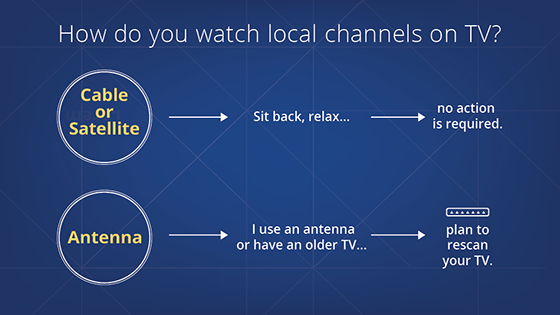The 4-Minute Rule for Apollo Group Tv
The 4-Minute Rule for Apollo Group Tv
Blog Article
5 Easy Facts About Apollo Group Tv Explained
Table of Contents7 Simple Techniques For Apollo Group TvApollo Group Tv Fundamentals ExplainedThe Basic Principles Of Apollo Group Tv All About Apollo Group Tv
In this circumstance, instead of having three-minute business places throughout a 30-minute television program, TV programming might change to one where a consumer will be required to have a monthly subscription, to ensure that they cen sight targeted banner ads. This kind of marketing already occurs on the web, and the quantity of information television business accumulate enables them to do much the exact same.Explain the major fads amongst the broadcasting and cable networks. Popular radio shows such as authorities dramatization Dragnet and western cowboy series Gunsmoke were adjusted for tv, and new TV programs were funded by single marketers, just as radio programs had been.
Today, the television market is much more complicated. Programs are sponsored by multiple marketers; shows is managed by major media conglomerates; and the three significant networks no more dominate the airwaves but instead share their viewers with countless cord channels. A number of aspects make up these fads within the sector, consisting of technical developments, federal government guidelines, and the production of brand-new networks.

The 30-Second Trick For Apollo Group Tv
Developed in 1969, (PBS) developed out of a record by the Carnegie Commission on Educational Television, which took a look at the duty of instructional, noncommercial television on society. Public television was additionally meant to provide universal access to television for visitors in rural locations or visitors that can not manage to pay for private tv services.
The duration in between 1950 and 1970 is traditionally acknowledged as the. Apart from a little portion of airtime regulated by public television, the three significant networks (referred to as the Big 3) controlled the tv sector, jointly accounting for greater than 95 percent of prime-time watching. In 1986, Rupert Murdoch, the head of multinational firm Information Corp, introduced the Fox network, testing the supremacy of the Big 3.
Targeting young and minority target markets with programs such as Buffy the Vampire Slayer, Moesha, Dawson's Creek, and The Wayans Bros., the new networks wished to draw stations away from their old network affiliations. Instead than duplicating the success of Fox, UPN and WB had a hard time to make an impact. Incapable to bring in lots of associate terminals, both recently established networks reached fewer families than their bigger opponents because they were unobtainable in some smaller cities.
This decision led the way for the growth of wire motion picture networks, adding to the rapid growth of cord in the 1980s and 1990s. apollo tv group. Further deregulation of cord in the 1984 Wire Communications Plan Act got rid of limitations on wire rates, allowing operators to bill what they desired for cable solutions as long as there worked competition to the service (a requirement that over 90 percent of all wire markets might meet)
Apollo Group Tv - The Facts

Having actually developed the very first "superstation," Turner increased his realm by founding 24-hour information network CNN in 1980. At the end of the year, 28 nationwide programming solutions were readily available, and the cable revolution had begun. Over the next decade, the market underwent a period of quick growth and popularity, and by 1994 visitors could pick from 94 basic and 20 costs wire services.
Number 9 - https://apollo-group-tv-47717575.hubspotpagebuilder.com/apollo-group-tv/apollo-group-tv-app-the-ultimate-streaming-solution-for-your-entertainment-needs.16 Raised competition from cord channels has created a constant decline in the networks' target market scores. During the 1950s, the price of producing a single tv show raised as programs became longer and production prices rose. Sponsorship on network tv shifted from solitary sponsorship, in which a program was entirely supported and produced by one advertiser, to multiple sponsorship, in which advertisers got 1- or 2-minute places on the program
Each reaction ought to be a minimum of one paragraph. Select among the Big 4 networks and publish out its regular programs routine. View the network's prime-time programs over the program of a week, keeping in mind the target group for each and every show. Observe the advertising and marketing enrollers that support each program and compare how the product or services fit with the designated audience.
The 5-Minute Rule for Apollo Group Tv

Straight TV, typically described as traditional check my reference program television, encompasses cable television and satellite television. It's called "linear" due to the fact that material follows an established programs timetable, unlike on-demand material which the private audience decides to view based on their very own preferences and schedule. So, when you ask, "What is straight TV?", assume of it as the traditional means of watching television that has been around for decades.
Report this page